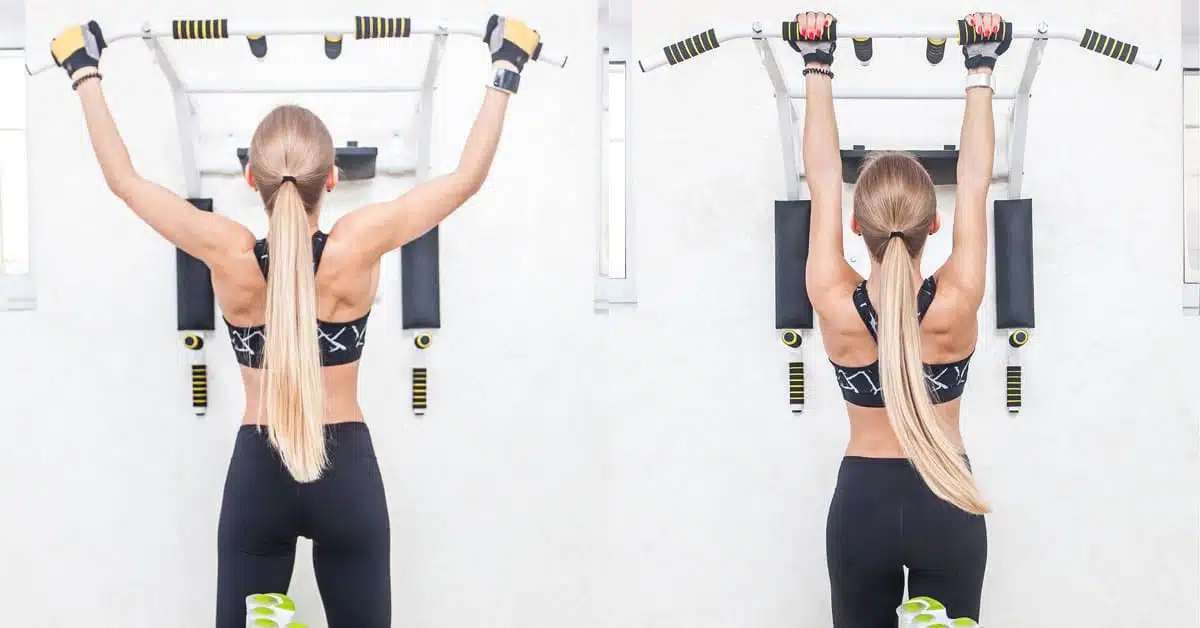In the fitness community, the Pull-ups is undoubtedly one of the absolute king exercises, which not only has a competitive character, but is also characterized by its extremely high demand for technical perfection. It is therefore not surprising that many beginners in particular seem to be awestruck when the name of this exercise is mentioned. As a consequence, many recreational athletes shy away from integrating the exercise into their training schedule. At this point, however, you should not throw in the towel prematurely, because the path to the first perfect pull-up is not as far as you might think. Therefore, with this article we would like to give you a guide to help you succeed in this endeavor.
Step by step to the first pull-up
Of course, there are some alternative exercises that you could use to replace the pull-up, but this would mean depriving yourself of the benefits that exercise offers you. In practice, the pull-up is an extremely complex exercise that involves the interaction of many different muscle groups and therefore trains your intermuscular coordination much better than exercises such as the lat or the classic barbell row. It's obvious that very few people can do the perfect pull-up right off the bat. However, this is no reason to despair, because due to the possibilities offered by modern gyms, there are different approaches that help athletes of different performance levels to achieve their goal.
All beginnings are difficult
For absolute beginners is suitable pull-up machine, which can be found in many gyms. This device makes it possible to offset part of one's own body weight with an appropriate counterweight, so that a lower load has to be moved in the course of performing the movement. In this way, even recreational athletes with a lower level of strength are able to perform their first pull-ups. A positive side effect of this approach is also that you can focus on using the correct technique, since you do not have to concentrate on stabilizing your body. Usually it is already sufficient to put on a counterweight that corresponds to about 20 percent of your body weight. Once this seems too easy, you can gradually reduce the counterweight. If your gym does not have a pull-up machine, you can use a training band made of durable rubber. You loop one end of this band around the handles of the pull-up bar so that a kind of loop is formed between them, in which you can position your knees. In effect, the band replaces the counterweight of the machine.
With momentum to success
Once you've passed the first level and completed the first pull-ups with a little support, it's time to move on to the next level and immediately throw overboard a fundamental rule of weight training - the clean execution of the technique. In the course of the so-called jump pull-ups, you'll use the power of momentum to help you perform the first, more or less free pull-ups. In the starting position, stand under the bar, place your hands on the handles of the pull-up bar and jump from a standing position, while at the same time pulling yourself up with your arms until your chin is above the bar. Repeat this procedure within three to four sets of 8-12 repetitions until you realize that you are strong enough to pull yourself up without swinging. Since you are sort of cheating in the concentric movement phase, you should put the additional loading focus on the eccentric movement phase by keeping the tension at the apex of the repetition and only slowly (3-5 seconds) returning to the start position.
Can it be a little more intense?
Once you've got past the intermediate step, which is based on a little cheating, you can move on to the supreme discipline, i.e. the execution of the first "real" pull-ups. As with the jump pull-up, position yourself under the bar and grasp the handles. Now slowly pull yourself upwards, making sure that your arms are not completely parallel to the bar, as this puts unnatural strain on your shoulder joints and can lead to serious injuries. It is better to maintain a slight angle between the upper arm and the upper body. This also guarantees that the latissimus is much better integrated into the movement. If you are already so advanced that the classic pull-up is too easy for you, you can use additional weights to increase the intensity of the workout. For this purpose, you can, for example, clamp a dumbbell between your legs. However, this only works with comparatively light weights. If you still want to use a heavier additional weight, we recommend using a pull-up belt, to which heavy weight plates can also be attached without any problems. In many gyms you can also rent such equipment.
As you can see, it's not that difficult to do pull-ups. All you have to do is proceed step by step and stay on the ball for the long haul, and you'll be able to do your first free pull-ups in no time.




